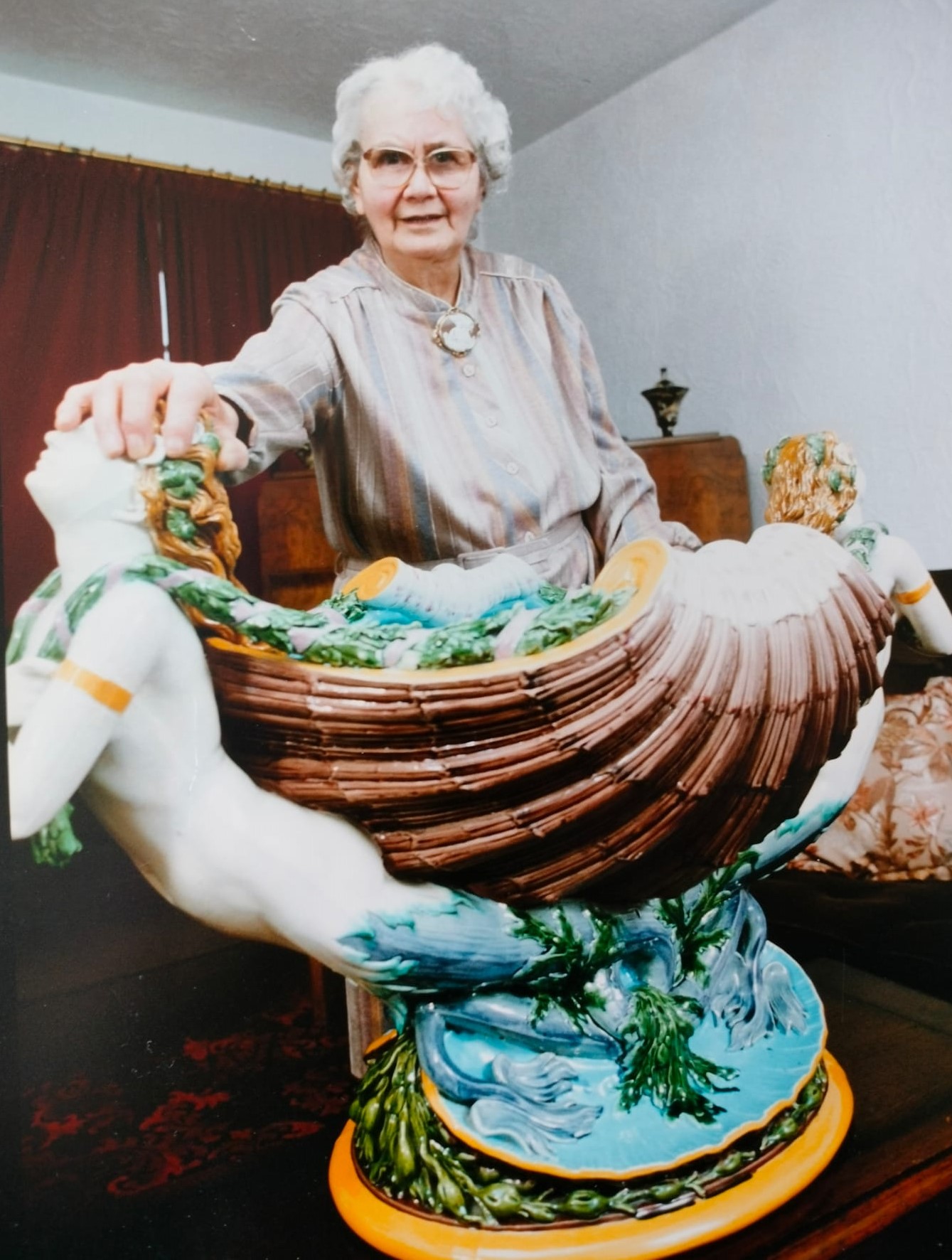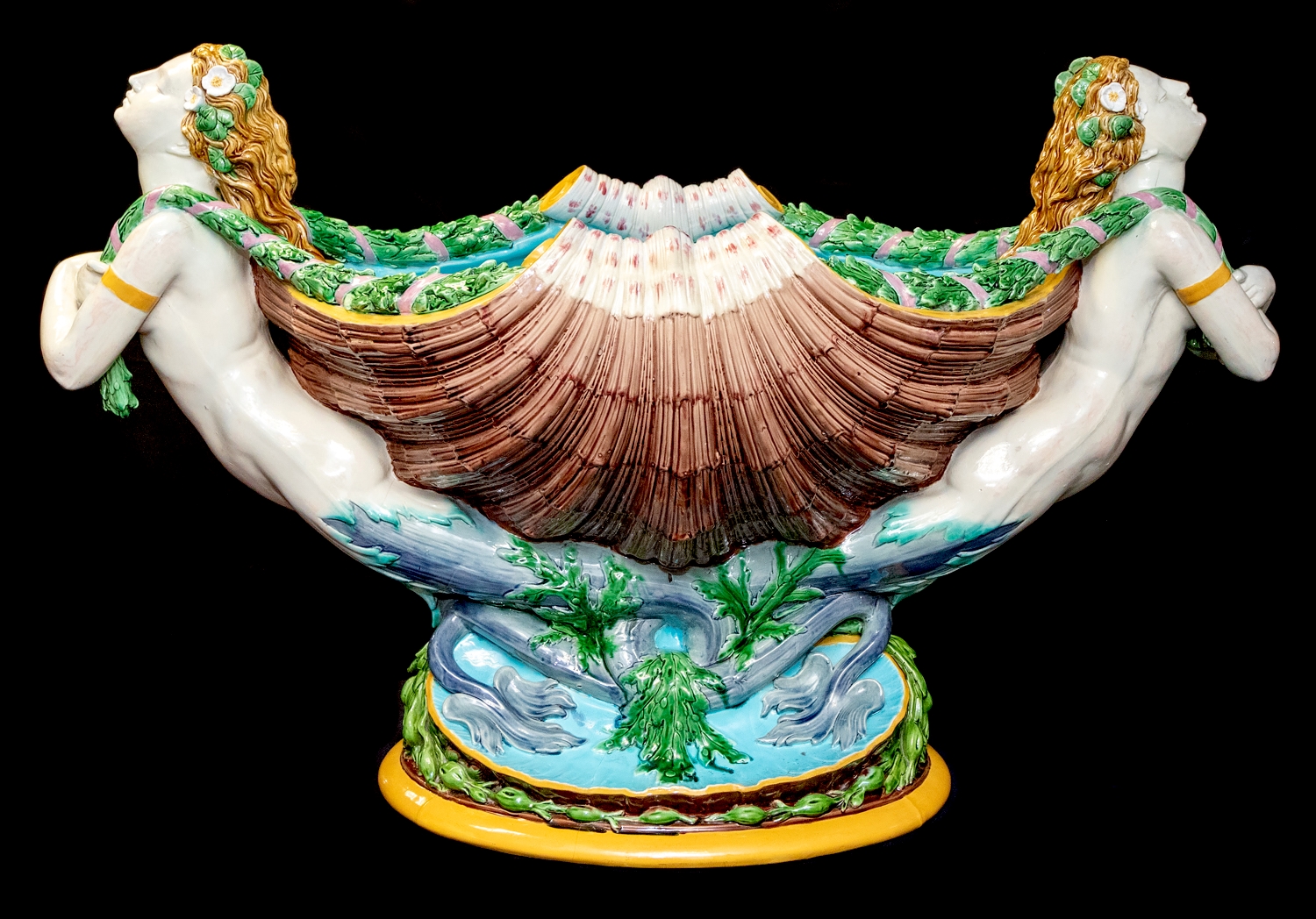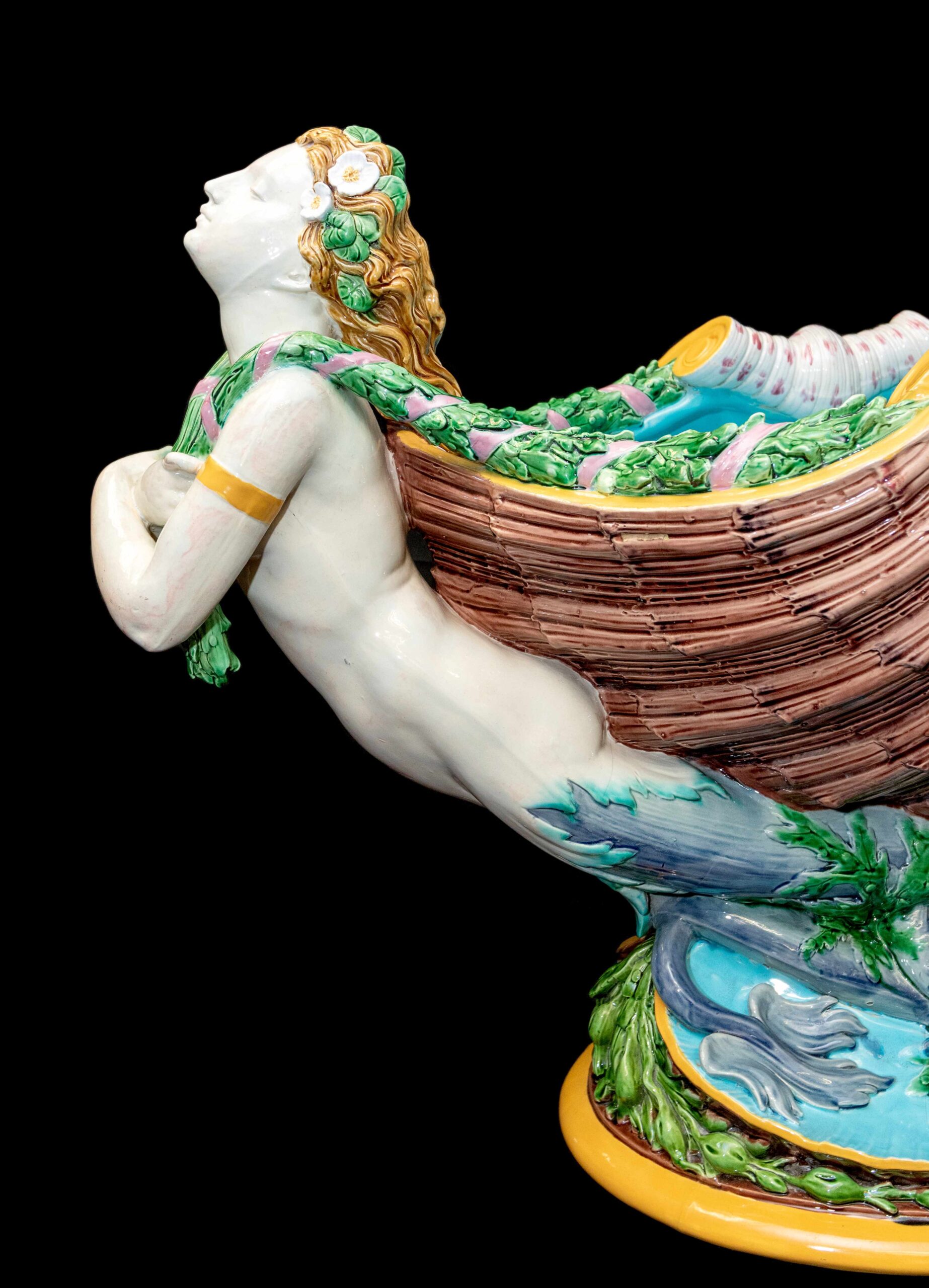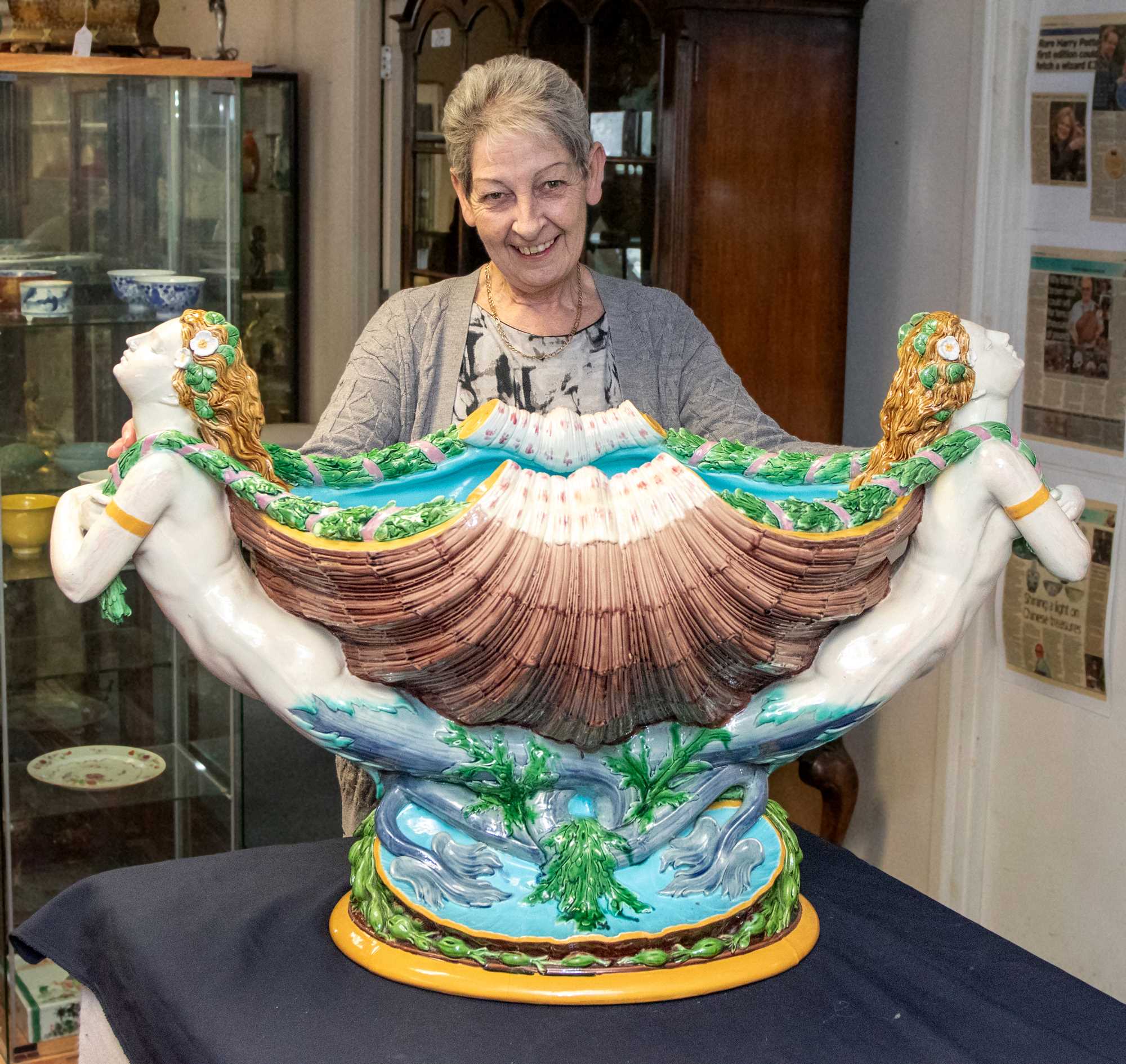Minton majolica could smash estimate
 One of the biggest Minton majolica ceramics pieces ever seen – bought for a few pounds in 1950 – could achieve thousands at auction.
One of the biggest Minton majolica ceramics pieces ever seen – bought for a few pounds in 1950 – could achieve thousands at auction.
Some 74 years ago factory worker Anne Pincher paid £25 – the equivalent of £786 today – for the striking Victorian exhibition piece made by pottery firm Minton & Co, of Stoke-on-Trent, Staffordshire.

The rare decorative object, which measures a mighty 99cm wide x 45cm deep x 62.5cm high, used to take pride of place in her front room in Darlaston, near Walsall, West Midlands. But later her majestic Majolica was displayed on her landing where it ended up being filled with general bric-a-brac – including tights!
It was a quirky but practical use for the piece which is listed in the 1871 Art Journal as ’Shell Flower Bearers’. A similar example was displayed at London’s Victoria and Albert Exhibition in 1873. It has dramatic curves and an elaborate shell shape, seemingly held aloft by two mermaids with golden tresses. Intoxicating thanks to its colour and detail, it is one of the biggest Minton majolica ceramics pieces Hansons Auctioneers has ever offered at auction.

Anne’s daughter, Marilyn, a retired legal secretary from Walsall, said. “When mum first bought her Minton she put it in the front room for everyone to see. In later years it had to be moved upstairs and she put it on the landing. Due to its shape and size, it ended up being filled with bric-a-brac and the odd pair of tights.
“Mum loved antiques and filled her house with them. It’s likely she put a small deposit on the Minton and paid for it in full when she could afford it. She bought it from some antique-dealer friends in Walsall. Goodness knows how she transported it the few miles to her home in Darlaston. Probably by horse and cart.”
As the years rolled by, Anne’s £25 antique grew in value and even ended up on TV’s Antiques Roadshow. It’s now set to go under the hammer guided at £4,000-£6,000 in Hansons Auctioneers’ March 21 Derbyshire Fine Art Auction – and the sky’s the limit.
Marilyn said: “I inherited the piece when mum passed away at the age of 83 in 1995. It’s extremely scarce because of its size. It’s twice as big as a smaller piece which Minton manufactured known as the ‘Flower Holder’.

“In 1990, when mum was 78, the News of the World ran stories about finding a fortune in the attic and they included a piece about her Minton. The article said it had been valued at £3,000-£4,000 but, eight years earlier, someone had offered mum a meagre £100 for it!
“In 1997 Antiques Roadshow came to Walsall and I got in touch with them. They kindly asked one of their experts, the late Henry Sandon, to interview me. Henry said mum’s Minton was worth £10,000 but to get it insured for £15,000. A story about the TV appearance made news in the Walsall Advertiser.
“I have enjoyed owning it. It used to be proudly displayed in the front room on a table. But, because of its value, it’s ended up being covered up in sheets and blankets in a spare room for the last couple of years. I’m decluttering at the moment and decided it was time to let go.
“It’s a shame to have it hidden away. It was made as a large exhibition piece for all to see. I hope it may be bought by a keen Minton collector or even a ceramics museum.
“It’s nice to see it getting some love and attention again from people who appreciate antiques. It must have star quality because a similar Minton Majolica piece was used in Daddy Warbucks’ mansion in the 1982 film Annie, starring Albert Finney.
“I’m not sure how many examples like it exist but, according to our research, very few. After all, it is around 150 years old. We’re aware of a similar one selling at auction in London for $40,000 (£31,000) in 2017 but it was in perfect condition and displayed on a wooden stand. Mum’s has some damage but we’re told that should not deter bidders.”

Gillian Finney, connoisseur ceramics consultant at Hansons, said: “It’s a truly spectacular piece, a rare Minton majolica marvel made in the Stoke Potteries in the 1870s. We’re guiding it at £4,000-£6,000 but hope it flies higher. It’s an important part of Minton, and England’s, ceramics history.
The roots of majolica pottery date back to the mid-15th century when maiolica, its original name, reached Italy from Spain, Majorca and beyond. This pottery was made with a tin-glaze process. From the mid 19th century majolica made by a simpler process emerged. Coloured lead silicate glazes were applied directly to an article, then fired. This resulted in brightly coloured, hard-wearing, inexpensive wares that were both useful and decorative.
This type of majolica was introduced at the 1851 Great Exhibition in London, and Minton and Co, founded in 1793 by English potter Thomas Minton (1765–1836), led the way.
Gill said: “Minton was Europe’s top ceramic factory during the Victorian era. As well as pottery vessels and sculptures, the firm was a leading manufacturer of tiles and other architectural ceramics. They produced work for London’s Houses of Parliament and United States Capitol. This exhibition piece is an impressive example of their design calibre. It deserves to be in a major collection or museum.”

